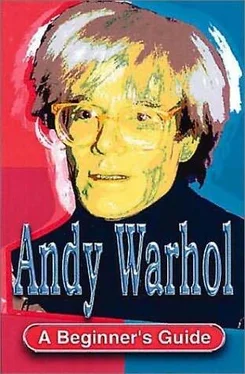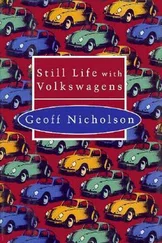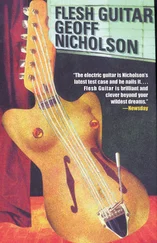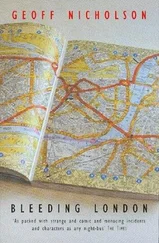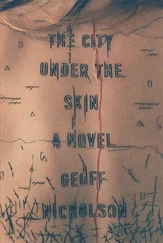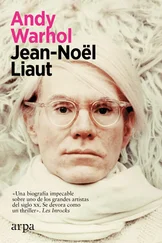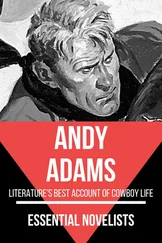Geoff Nicholson - Andy Warhol
Здесь есть возможность читать онлайн «Geoff Nicholson - Andy Warhol» весь текст электронной книги совершенно бесплатно (целиком полную версию без сокращений). В некоторых случаях можно слушать аудио, скачать через торрент в формате fb2 и присутствует краткое содержание. Год выпуска: 2002, Издательство: Hodder & Stoughton, Жанр: Биографии и Мемуары, на английском языке. Описание произведения, (предисловие) а так же отзывы посетителей доступны на портале библиотеки ЛибКат.
- Название:Andy Warhol
- Автор:
- Издательство:Hodder & Stoughton
- Жанр:
- Год:2002
- ISBN:нет данных
- Рейтинг книги:5 / 5. Голосов: 1
-
Избранное:Добавить в избранное
- Отзывы:
-
Ваша оценка:
- 100
- 1
- 2
- 3
- 4
- 5
Andy Warhol: краткое содержание, описание и аннотация
Предлагаем к чтению аннотацию, описание, краткое содержание или предисловие (зависит от того, что написал сам автор книги «Andy Warhol»). Если вы не нашли необходимую информацию о книге — напишите в комментариях, мы постараемся отыскать её.
Andy Warhol — читать онлайн бесплатно полную книгу (весь текст) целиком
Ниже представлен текст книги, разбитый по страницам. Система сохранения места последней прочитанной страницы, позволяет с удобством читать онлайн бесплатно книгу «Andy Warhol», без необходимости каждый раз заново искать на чём Вы остановились. Поставьте закладку, и сможете в любой момент перейти на страницу, на которой закончили чтение.
Интервал:
Закладка:
Geoff Nicholson
Andy Warhol
1Introduction
It would be hard to overestimate the importance that Andy Warhol and his work have for the contemporary visual arts. His work addresses and indeed embodies most of the major themes and dilemmas that confront modern artists.
These might be briefly described as: the role of popular culture and the mass media, the significance of the reproduced image, the nature of fame, celebrity and glamour, issues of sexuality, gender and representation, and not least, irony.
He is by any reckoning a ‘Pop Artist’. His paintings of soup cans and Coke bottles, of Elvis Presley and Marilyn Monroe, of car crashes and electric chairs, provide some of the most distinctive and identifiable images in Pop Art*, and have done so since the early 1960 s.
≡ A twentieth-century art movement that takes us images from consumerism, the mass media and popular culture, and simultaneously subverts and celebrates them.
Yet he now appears to be an artist of much wider and greater significance than the term ‘Pop Art’ suggests. He also belongs, at least in part, to a number of other artistic traditions: Minimalism¹, Dadaism², conceptual art³, and above all portraiture, not least self-portraiture.
1: A movement that strips art down to its elemental forms, relieving it of subjective or personal expression. Artists include Donald Judd and Carl Andre.
2: A largely nihilistic artistic movement which believed in the subversion of traditional art and culture. Mists include Tristan Tzara and Marcel Duchamp.
3: Art that is more concerned with ideas than with representation. Its appeal is therefore intellectual rather than visual. Artists include Joseph Beuys. Christo. Yoko Ono.
Although he is best known for his works on paper and canvas, his work as a filmmaker, photographer, diarist, and occasionally as a sculptor (or at least maker of objects) and even as a product designer, share much of the same aesthetic.
Early in his career Warhol was perceived as a charlatan who had contempt for the art establishment and for the general public, and perhaps for art itself. Bringing paintings of soup cans or dollar bills into the temple of high art was seen as a deliberate desecration. Today it seems not so much that he hated high art, but that he was changing the nature of what art could be, and blurring forever any hard and fast distinction between high art and low.
Certainly he was a prankster and a provocateur. There undoubtedly is something outrageous in filling an art gallery with 32 more or less identical paintings of Campbell’s soup cans. It was new and it was attention-grabbing. The soup cans demonstrate that even though Warhol’s art often has a blankness and a banality to it, it is never quiet or introverted.
Warhol’s other provocations included sending a Warhol impersonator out on a lecture tour, having his assistants make his paintings for him, having his mother sign his work, publishing a ‘novel’ that he claimed never to have read, since it was made up of transcriptions of other people’s telephone calls, and publishing a book of photographs called America that contained pictures taken in France.
You could argue that these subversive activities sometimes got in the way of the art, but it might be truer to say they were intrinsic to it. If these things demonstrate an amused scepticism about art, it is surely one that any sensible observer of the modern art scene is likely to share. In that sense we get the feeling that Warhol is on our side.
Robert Hughes in American Visions says that Warhol’s art;
“…all flowed from one central insight: that in a culture glutted with information, where most people experience most things at second or third hand through TV and print, through images that become banal and disassociated by being repeated again and again and again, there is a role for affectless art. You no longer need to be hot and full of feeling. You can be supercool, like a slightly frosted mirror.”
This tells only half the story. Certainly you would be hard pressed to claim that all of Warhol’s art is ‘hot and full of feeling’, yet it is seldom quite as blank or affectless as both its fans and critics claim. Series such as the electric chairs, the car crashes, the atom bomb explosions, the skulls, the Jackie Kennedy and Marilyn Monroe portraits, extract very powerful feelings from apparently disassociated and exhausted images. In that sense his art is about renewing and revitalizing feelings, not about escaping from them.
Warhol is perhaps unusual in not having created any single masterpieces; there is no Mona Lisa , no Guernica in his canon. All his great works come in multiples; many soup cans, many Coke bottles, many Marilyns, many Maos. There was no doubt a commercial principle at work here. There was a large demand for Warhol’s work and he was eager to satisfy it. On the other hand, the art world is such that scarcity can also create value; the prices of Francis Bacon’s paintings, for instance, rose so high because he destroyed so many of them.
But financial art market considerations aside, it seems completely appropriate that Warhol’s art is so plentiful, so abundant. He is concerned with the world of mass media and mass production, with repeated images and standardized everyday products, with glut and overload. It would be absurd if he had created only a few tortured, costive works of art.
We should treat with suspicion the much repeated line that ‘Andy Warhol was his own greatest creation’, yet there is no doubt that he lived and looked the part of the Pop Artist — the cool, detached, opinionless observer — and this was a role he worked hard to establish and maintain. In this role he finds life with its attendant relationships, sex and love, endlessly difficult. He says he’d prefer not to care. He says he wants to be a machine. He tells interviewers they should just make up what they want him to say and he’ll say it. Whether he actually ‘meant’ any of this is beside the point.
The Warhol persona inhabits a strange territory between the naive and the faux naif* , between the instinctive and the artificial.
≡ Someone or something that has the appearance of naivety but in reality is very knowing and sophisticated.
It is a pose but it is not completely fake. When it was suggested to Paul Morrissey, the chief collaborator on the later Warhol films, that Warhol was an idiot savant* , he replied, “Well, I don’t know about the savant part.”
≡ Term used to describe individuals who display little obvious intelligence but are able to perform formidable mental or artistic tasks.
There is no doubt some personal spite in this comment, but Truman Capote seemed to be of much the same opinion when he described Warhol as a sphinx without a riddle.
In a 1968 exhibition catalogue, Warhol was quoted as saying;
“If you want to know all about Andy Warhol, just look at the surface of my paintings and me, and there I am. There’s nothing behind it.”
One is, of course, free to decide to what extent this is a pose, and how far it is said for effect, ironic or otherwise.
You might also wonder whether this is a genuine attempt to demystify his art or just another form of mystification. After all, nothing reinforces a mystery quite as much as saying that there’s no mystery at all. Either way, Warhol is reacting to a long tradition which claims that serious avant-garde art could not be understood without the benefit of an elaborate intellectual theory, what Tom Wolfe calls the ‘painted word’. Of course it is in the nature of theory that it can be applied where it is not required, but Warhol is surely the least theoretical of artists. When he says that what you see is what you get, you can hear a whole army of lay art enthusiasts breathing a collective sigh of relief.
Читать дальшеИнтервал:
Закладка:
Похожие книги на «Andy Warhol»
Представляем Вашему вниманию похожие книги на «Andy Warhol» списком для выбора. Мы отобрали схожую по названию и смыслу литературу в надежде предоставить читателям больше вариантов отыскать новые, интересные, ещё непрочитанные произведения.
Обсуждение, отзывы о книге «Andy Warhol» и просто собственные мнения читателей. Оставьте ваши комментарии, напишите, что Вы думаете о произведении, его смысле или главных героях. Укажите что конкретно понравилось, а что нет, и почему Вы так считаете.
